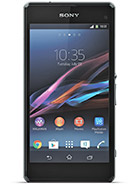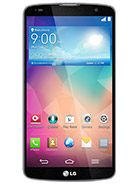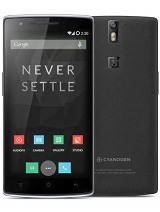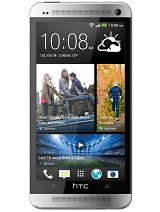GSMArena smartphone shopping guide: August 2014
August 2014
€300-€400
Here we have newer former flagships and, surprisingly, a current one - the HTC One (E8) just made it into this category. It's rather large so there's a choice of more compact devices, all of which very capable.
The Sony Xperia Z1 Compact is said to be days away from being replaced by the Z3 Compact but that can only bring about a price drop and it's still an amazing phone. It has a Snapdragon 800 chipset and a 20.7MP camera with 1/2.3" sensor packed into small body with a 4.3" 720p screen. Like its bigger siblings, the phone is water-resistant with an IP58 rating.
The Xperia Z1 Compact may not be quite as small as the 4.3" minis of the previous chapter but we're talking a completely different level of performance here. Again, it's smart to wait until the Z3 Compact is announced.
 Sony Xperia Z1 Compact |
Pros | Cons |
|
|
|
| Review | ||
The full-size Sony Xperia Z1 has virtually the same price as the Z1 Compact. It has a bigger, sharper screen - 5" 1080p - and a bigger battery (3,000mAh vs. 2,300mAh). Other than that the two Z1 phones are virtually identical, Sony did an admirable job of not short-changing its flagship mini.
The Xperia Z1 is not the smallest or lightest phone in its class though, it's noticeably taller and wider than the 5.2" LG G2 below. It weighs 170g too.
Still, the Xperia Z2 doesn't do much to alleviate those complaints and the differences between the two phones don't necessarily make up the €100+ price difference. The Z2 has a slightly bigger screen (5." vs. 5"), better video capture (2160p vs. 1080p), slightly faster chipset (S801 vs. S800), more RAM (3GB vs. 2GB) and stereo speakers.
The Xperia Z3 is just around the corner but rumors are showing even fewer changes to the Xperia Z flagship.
 Sony Xperia Z1 |
Pros | Cons |
|
|
|
| Review | ||
The new LG G3 went straight into phablet territory but its predecessor still passes for a flagship - the LG G2 puts very little bezel around its 5.2" 1080p screen and was one of the most impressive phones of last year.
The camera is an optically stabilized 13MP shooter that's similar to what the G3 has. It can't shoot 2160p though, it tops out at 1080p @ 60fps, and it uses the older generation OIS. Other differences include a lack of microSD card slot (so get the 32GB version) and a non-removable battery (a single 3,000mAh should be enough though).
 LG G2 (32GB) |
Pros | Cons |
|
|
|
| Review | ||
If you looked at the LG Optimus G Pro and thought "not big enough," the LG G Pro 2 is here with a 5.9" 1080p screen. It has a Snapdragon 800 chipset and a 13MP camera with 2160p video and optical stabilization, removable battery and expandable storage to boot.
You can think of it as a bigger, cheaper alternative to the 5.5" LG G3 as the G2 above misses out on some of these features. It really is big though - not Xperia Z Ultra big but still.
 LG G Pro 2 |
Pros | Cons |
|
|
|
| Review | ||
The OnePlus One is based on the Oppo Find 7a and is one of the best phones you can buy for its price tag. That's provided you can buy it, OnePlus haven't done the best job with manufacturing and distribution.
Still, you get a 5.5" 1080p screen, a Snapdragon 801 chipset, a 13MP camera with 2160p video capture and a relatively cheap option for 64GB storage. There is no microSD card slot and no 32GB version so 64GB is the one you want.
The OnePlus One is a proper competitor to the LG G3 and other similarly sized phablets. A QHD screen might sound impressive in a numbers comparison but make sure your eyesight is good enough to appreciate the difference to 1080p.
Oh, and unlike the Oppo, the OnePlus runs a special version of CyanogenMod so you get a stock Android with some helpful tweaks and a solid reputation for OS upgrades (the CM teams supports phones long abandoned by their maker).
 OnePlus One |
Pros | Cons |
|
|
|
| Review | ||
The HTC One is in a similar situation as the Xperia Z1 - its successor is an excellent phone but for the €100+ price difference you have to consider whether the new features are worth it. The 4.7" 1080p screen is of great quality but may feel a little cramped.
The trademark One features are in place though, an aluminum unibody and front-facing stereo speakers. The camera is a 4MP UltraPixel shooter with 1080p video capture plus OIS. The One (M8) can't do 2160p either and lacks OIS, so whether the Duo camera is worth it the extra dough is questionable.
Snapdragon 600 is behind in performance compared to the Snapdragon 801 but in regular daily usage you might not even notice a difference.
The Samsung Galaxy S4 got a refresh with a Snapdragon 800 chipset and LTE-Advance connectivity that is variously known as the Galaxy S4 LTE-A or S4 Advance or even just Galaxy S4. You'll recognize it by the model number I9506 (I9505 is the old Snapdragon 600 model). Anyway, the phone packs a 5" 1080p Super AMOLED screen, 13MP/1080p camera, expandable storage and relatively compact design. You can get a Black edition if you're no fan of Samsung's glossy plastic.
The Galaxy S4 LTE-A sits midway between the original S4 and the new Galaxy S5 in terms of price and features, a good option if you can't find a use for some of S5's extra features (the heart rate monitor, fingerprint sensor and 2160p video capture to name a few).
 Samsung I9506 Galaxy S4 |
Pros | Cons |
|
|
|
HTC is known for its metal-clad flagships but the plastic HTC One (E8) is cheaper and has a better camera to boot. The 4MP UltraPixel camera was barely okay last year and way behind in 2014. The Duo camera didn't make up for lack of resolution so it was good to see HTC drop it in favor of a 13MP/1080p shooter (we would have liked it even better if it shot 2160p video).
If you're going to put a case on the phone it doesn't matter too much if it's metal or plastic and other than the body, the One (E8) has all the good stuff about the (M8) - a a 5" 1080p IPS screen, Snapdragon 801 chipset, front-facing BoomSound speakers, beautiful Sense UI and expandable storage. There's a dual-SIM version of the One (E8) if you need it.
 HTC One (E8) |
Pros | Cons |
|
|
|
| Review | ||
Reader comments
- AnonD-322228
- 21 Oct 2014
- 3ar
After a to long wait I am 19 hours into being able to boost my second phone is a Nexus 5 my pride and joy is my OnePlus One .... First none stock android phone I have had.....its like being reborn .....I can not get my Nexus X Sim accepted ..... B...
- xyz
- 21 Sep 2014
- BLg
I would say that htc One E8 is the best budget flaggship one could ask for! M8's sibling and the most premium and latest phone one can buy in around 30-32k
- Tim
- 03 Sep 2014
- ii6
Actually it is true - better than leaky Android with security issues and riddled with spyware.
